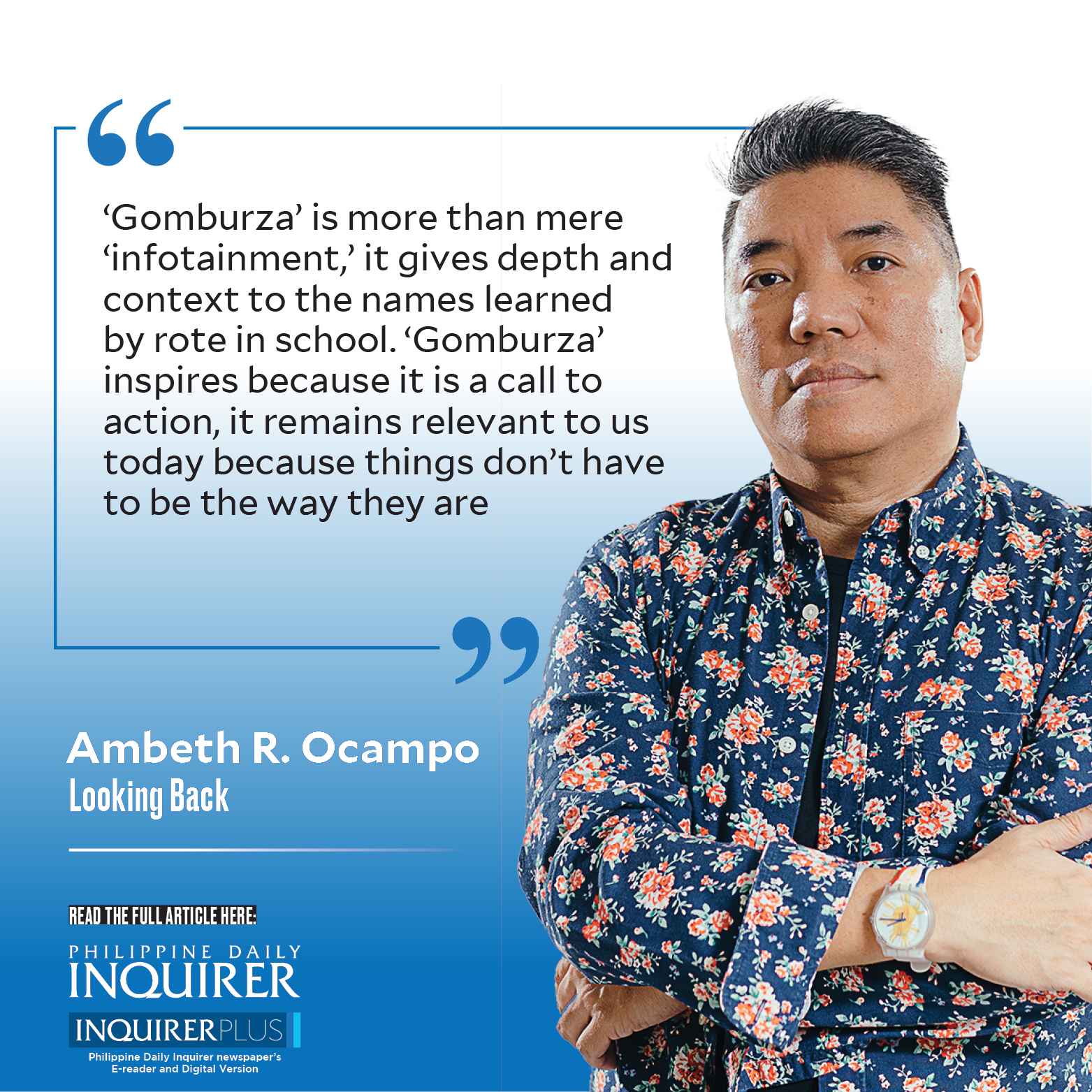‘GomBurZa’: History comes alive

I risked catching COVID or the flu on Christmas Day by watching two entries to the Metro Manila Film Festival with storylines drawn from Philippine history. Both films had Piolo Pascual playing a 19th-century Filipino priest. Both film titles are surnames.
Gomburza (not “MaJoHa”) is shorthand for the names of three priests martyred in Bagumbayan in February 1872: Mariano Gomes, Jose Burgos, and Jacinto Zamora. Mallari isn’t in textbook history, but we learn it from the internet. Fr. Severino Mallari was picked out of the dustbin of history through archival research by Dr. Luciano Santiago and clickbait generated by the Center for Kapampangan Studies that promotes him as “the first Filipino serial killer.” Worse, Mallari is “celebrated” for the wrong reasons as “the first Filipino priest executed by the Spanish, antedating Gomburza by 32 years.” Mallari should never be spoken in the same breath as Gomburza. Mallari was a psychopath who allegedly murdered 57 people. Gomburza were innocent, and unjustly executed. Gomburza is a mantra in Rizal’s “El Filibusterismo,” a mantra of the Philippine Revolution against Spain.
Both films have excellent cinematography, their stories move forward through sound scripts and nuanced direction. While we must not compare apples and oranges, my professional bias leans, hands down, toward “GomBurZa.” “Mallari” is a roller coaster that makes us scream in parts and gets our adrenaline going, but after the almost two-hour ride, it is just entertainment. “GomBurZa” is more than mere “infotainment,” it gives depth and context to the names learned by rote in school. “GombBurZa” inspires because it is a call to action, it remains relevant to us today because things don’t have to be the way they are.
“GomBurZa” director Pepe Diokno, in my view, surmounted two challenges. First, having the film judged on historical accuracy. It will be unfairly weighed on a scale if taken as a doctoral dissertation. It’s a film! I know this well from personal experience, having endured constipated critics who demand the elements of an academic paper in an 800-word editorial page column: Where are the footnotes? Where is the bibliography and review of related literature? Does it have a conceptual framework? Outside academia and refereed journals, narrative history has never gone out of style and “GomBurZa” is history for the public, not academics. It does not have a bibliographic apparatus but watching it I could tell what primary sources were utilized for almost every scene. The eye over the director’s shoulder happens to be his aunt, University of the Philippines professor Maris Diokno, former National Historical Commission chair.
Diokno’s biggest challenge is the second, that the audience knows what will happen in the end. Gomburza will die. Yet he manages to maintain interest. Unlike other historical films that had me counting minutes to the end wishing they would kill the hero so I can go home, this one kept me on the edge of my seat till the end. “GomBurZa” opens with Fr. Pedro Peláez, champion of the secularization and Filipinization of the church. Peláez argued against parishes being taken from “seculars” (priests who were not members of a religious or friar order) and turned over to Spanish friars who discriminated against native priests and even “Filipinos” (Insular Spaniards who were born in the Philippines rather than Peninsular Spaniards born in Spain). Peláez, played by Piolo Pascual, is dispatched early on, buried under the rubble of the Manila Cathedral during the 1863 earthquake. Peláez’s cause is inherited by the young impertinent Jose Burgos played by Cedrick Juan whose fire is tempered by the aged Father Gomes played by Dante Rivero, who, despite a distracting wig, portrayed quiet wisdom born from experience. This film made me understand why first billing in the acronym goes to Gomes, and why it is not alphabetically Bur-Go-Za. Enchong Dee played the tragic Father Zamora who suffered a nervous breakdown and was practically dead long before his neck was broken by the garrote.
Diokno puts everything in context. Spanish overreaction to 1872 was born from the wars of independence (1809-1825) that saw the loss of Spanish (Latin) America with the exception of Cuba and Puerto Rico liberated after the 1898 Spanish-American War. Independence was fueled by criollo (Spaniards born in the colonies) discontent with Peninsular Spaniards. A significant detail in the film shows Burgos, a Spaniard, writing and owning the term “Filipinos.” Later, Rizal describes “El Filibusterismo” (1891) as a “Novela Filipina.” Not shown in the film is Rizal’s description of “Noli Me Tangere” (1887) as a “Novela Tagala.” When Rizal and his generation appropriated the term “Filipinos” to include indios and mestizos like themselves, when they began to see Filipinas rather than Spain as their motherland, the emergence of the Filipino nation was at hand.
—————–
Comments are welcome at aocampo@ateneo.edu




















